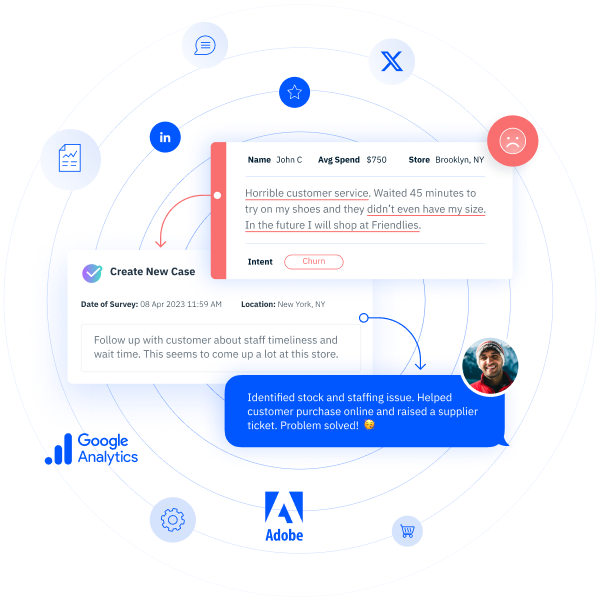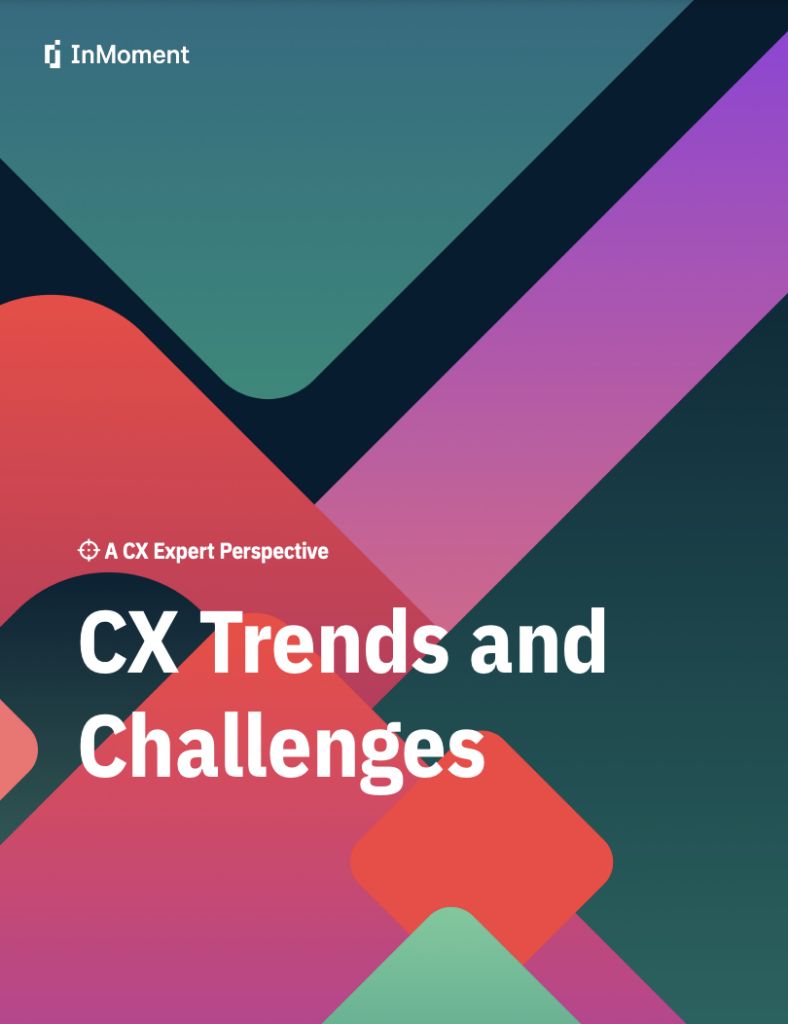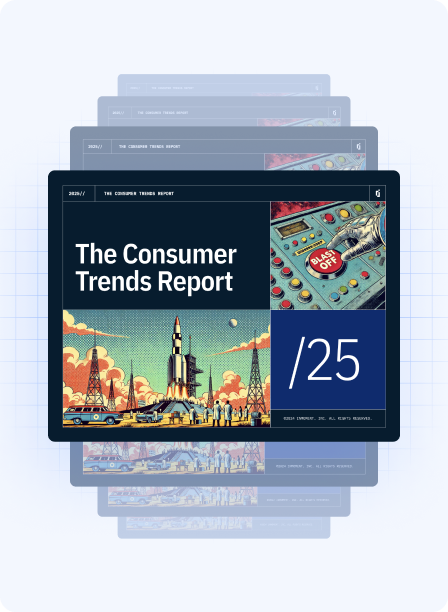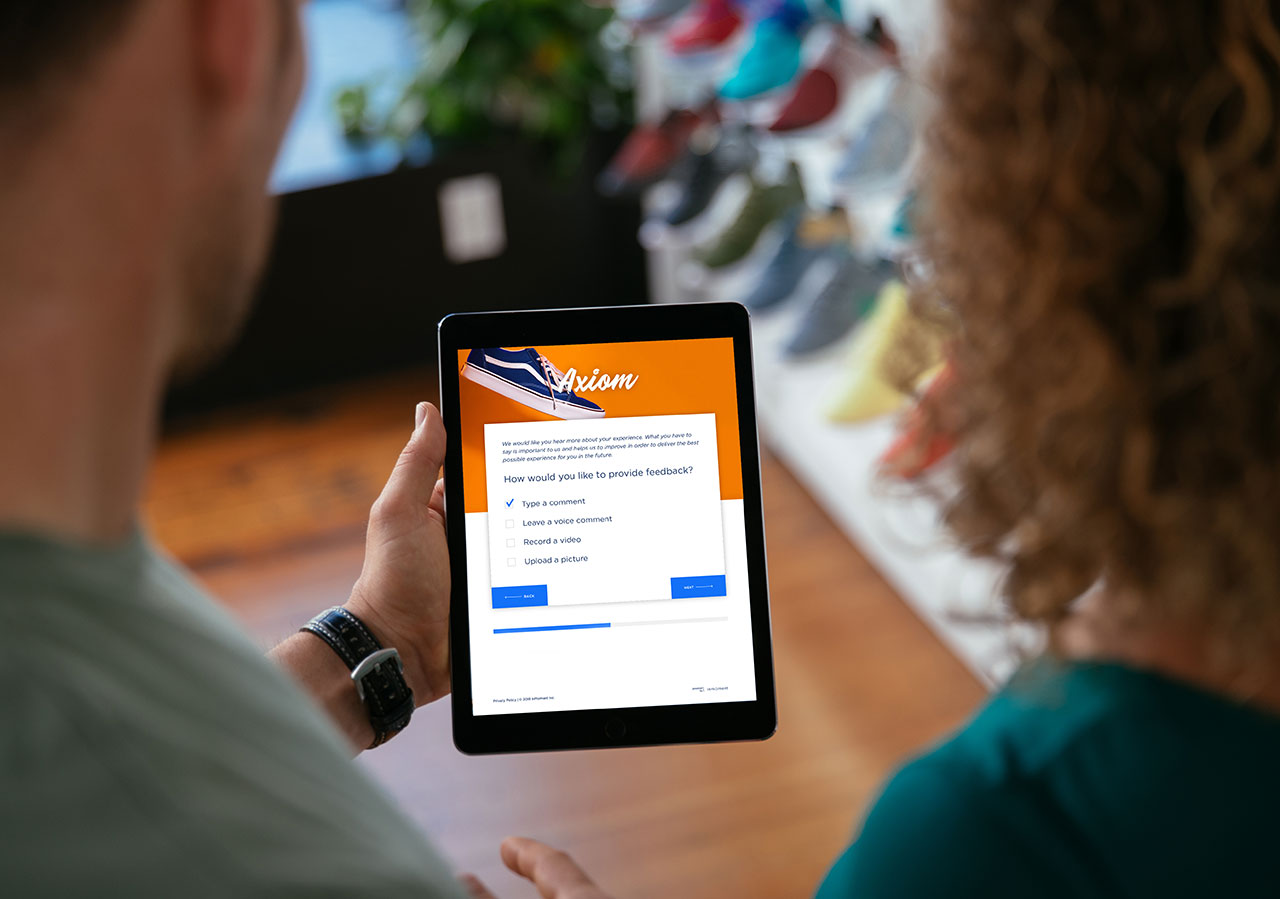How Quick Service Restaurants Can Leverage Customer Feedback in Every Department

In our last blog about creating an excellent food service customer experience (CX), we talked about how vital customer reviews are to growing your business (and how your customer experience plays a pivotal role in making sure your reviews are positive).
It’s clear the customer experience is vital for any food services business, and in our decades of experience working with the world’s best brands, we’ve noticed a common challenge: food service customer experience data is often very siloed from department to department, and team to team. Too often customer experience data isn’t being shared or leveraged across departments, even though there is tremendous value for all departments to make business decisions that either cut costs, help to acquire new customers, retain existing ones, and grow the lifetime value of your loyalists.
In order to win in a competitive market, all departments need to have a sense of ownership in the customer experience. Every team should be able to explain how their role connects to the customer and to the customer feedback, from the front line to operations. We are going to walk through how different departments can benefit from customer feedback and some examples of how it can be used.
How Five Different Departments Can Leverage Customer Feedback in Food Services Brands
#1: Leveraging Customer Feedback in Operations
In food services, operations managers are typically concerned with hiring and training employees, coordinating work and schedules, developing working relationships with front and back of house staff, and more. Where customer feedback can help with these responsibilities is by promoting an internal culture that puts the customer at the center. Your employees need to be on board with what you are trying to accomplish with your customer experience efforts from day one, and giving them a window into the end customer is one way to do that!
Building employee buy-in comes from rallying around the employees. This can be done in a variety of ways. One example of this comes from an InMoment quick service restaurant (QSR) customer who has had great success by building an employee Facebook group to share success stories. This keeps employees engaged and aware of what is happening within the company, and helps to inspire them to create great experiences.
Another example of how to rally employees around the customer experience is by using a solution like Moments. Moments from InMoment helps you to build a meaningful experience culture and inspire employee advocates for your program. Moments is available in an app, allowing you to surface valuable comments in an Instagram-like feed, so your teams have access to customer feedback anywhere they go!
Additionally, customer feedback also helps food services brands to ensure quality customer experiences at scale and across locations. For example, a globally popular restaurant chain and InMoment customer previously used mystery shopping techniques to gather data before partnering with InMoment. Mystery shopping gave this business very limited data that they only had access to once a month. With InMoment, they are able to show stores how they rank on key metrics such as friendliness and value. And, as this program has progressed, they are able to draw correlations between stores that are performing well in the system and their sales.
#2: Leveraging Customer Feedback in H.R.
The best way to use customer feedback in human resources is to highlight employee success. Research shows that 79% of employees who quit their jobs say that they didn’t feel appreciated. Knowing this, an InMoment QSR customer built an employee recognition page on their company intranet to recognize employees! This page quickly became the most-read page on their website.
By highlighting employee success, you will be able to reduce turnover, which means not having to spend the money on training new employees. Our QSR clients say training a new employee can cost them an average of $1900! By reducing turnover, you’ll not only experience significant cost savings, but you’ll also have more tenured employees that create the best customer experiences. And we don’t know about you, but lower costs and better experiences sounds like a whole lot of value to us!
#3: Leveraging Customer Feedback in Finance
Using customer feedback in finance may sound obscure, but it may be one of the best ways to help your business succeed. By listening and digesting customer feedback, you’ll be able to recover at-risk revenue. You can identify where you may be losing customers and reach out to recover them.
It will also help you build a high sales potential. Forrester research shows that customers who receive positive experiences are 2.7xs more likely to spend more with a brand. By curating a positive experience, customers will be more inclined to revisit and spend more with your business.
Furthermore, if customers receive a positive experience, they are more likely to talk about it. Research shows that 3% of CX-fueled revenue is from word of mouth.
#4: Leveraging Customer Feedback in Development
It is important to be aware of where your customers are coming from in order to promote the growth of your business. As a QSR owner, you should be able to look at a map and point to where your customers are coming from. If not, you need to be leveraging customer surveys to answer those questions.
Once you are able to pinpoint where your customers are coming from, you can use it to inform your business decisions. Are you planning on expanding and opening new locations? Your customer feedback will help you decide where to put your stores.
Leveraging customer feedback not only helps you sustain your current business, but also helps you grow and build your business.
#5: Leveraging Customer Feedback in Marketing
Any time you unveil a new item, promotion, or special, the customer needs to be at the heart of that campaign.
A globally popular restaurant chain and InMoment customer recently tested new menu items out in their stores. The company thought it was time for a change, and ended up replacing two items that had been on the menu for years. After taking these older items off the menu, they quickly received heaps of customer complaints asking them to bring those items back.
For marketers, customer feedback helps you to bridge the gap between what you perceive customers want from your brand, and what they actually need from you to keep coming back for more.
Everyone Owns the Customer Experience—And Everyone Can Benefit
In order to deliver on customer expectations, every department needs to have a line of sight into the customer experience. The information you receive from customers needs to be shared with all other departments and teams, not siloed in different departments, otherwise, you could be sitting on insights that could make a huge difference in your bottomline. When you break down those silos and create channels of communication across departments, your business will see more success in the areas that matter most!
For more information on using feedback throughout your organization, read our ebook here!






